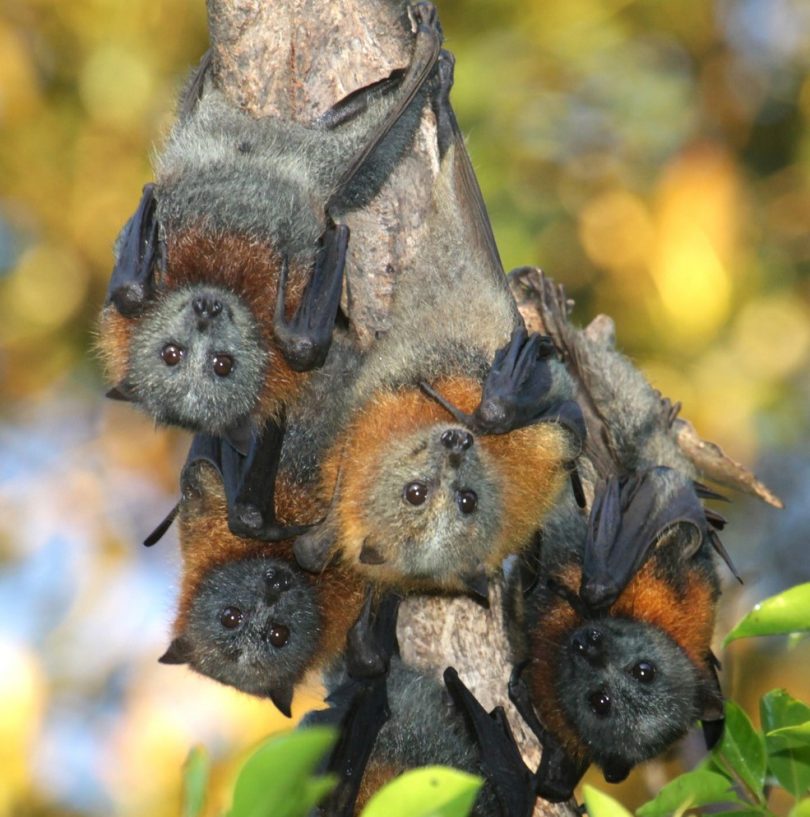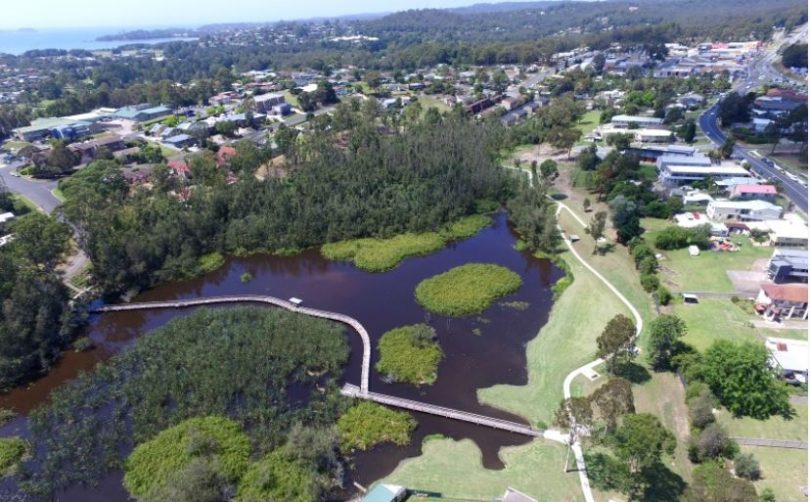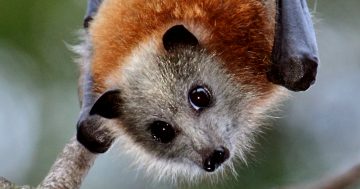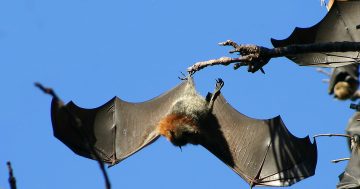
Eurobodalla Shire Council has adopted a Flying Fox Management Plan. Photo: Eurobodalla Shire Council.
With the chatter of a small flying fox camp at Catalina being monitored, Eurobodalla Shire Councillors have endorsed a new management plan that looks to strike a balance between the needs of residents and this vulnerable native species.
According to Council, there are currently around 1,600 Grey-headed Flying Foxes just south of the Batemans Bay CBD. Residents are being asked to report any new camps as Council continues to monitor numbers and impacts.
Meantime, a new shire-wide management plan is now at play following months of community consultation and scientific input.
The plan adopted at the most recent Council meeting provides a framework to help reduce the impacts of flying foxes on locals and visitors while conserving the animals and acknowledging the role they play within the ecosystem.
Council says the plan provides some level of certainty to the community as to how current and future camps are likely to be managed. Those actions may be updated as a situation changes, or as further research improves Council’s understanding of flying foxes.
Council’s Environment Services Manager Deb Lenson says it is important to recognise that managing the number and locations of flying foxes is unpredictable and extremely challenging.
“We know that flying foxes return to the Eurobodalla annually and we are continuing to monitor the camps and providing updates and information to residents,” she says.
“Flying fox numbers in Eurobodalla usually start to increase at this time of year. As of late November, there is one known flying fox camp in Catalina.
“Flying foxes can travel large distances for food, and Council has also had reports of night-time foraging in Batemans Bay, Bodalla, Moruya Heads and Tuross.
“New camps may also establish across the Eurobodalla so it is important the community notifies Council of daytime sightings so we can investigate,” Ms Lenson says.
If you see flying foxes camping in new areas, you are asked to call Council’s Natural Resource Officer, Mitchell Jarvis, on 4474 1263, or use the online reporting form.
The primary focus of the Eurobodalla Flying Fox Management Plan is minimising the impacts flying foxes can have on people living within 300 metres of a camp, particularly on Council-managed land.
Action’s Council has committed itself to include:
- Continued employment of a dedicated Natural Resources Officer to facilitate flying-fox management and engagement with the community;
- Providing relief to residents through subsidised services when conditions require;
- Undertake flying fox dispersal, where necessary and in accordance with approval conditions;
- Participating in flying fox monitoring and research;
- Maintain buffer zones on Council land;
- Ongoing restoration of the Batemans Bay Water Gardens with the planting of native species and weed control;
- Collaborating with other councils, agencies, land managers and community groups;
- Implement a communication strategy based on community feedback;
- Community education about flying-foxes and other bats.
The adoption of the flying fox management plan ends a process that started with what some residents might describe as a crisis.
In 2016, the Batemans Bay Water Gardens and parts of the Catalina golf course were inundated with 100,000 flying foxes.
At the time it was estimated that 20% of Australia’s total flying fox population was in Batemans Bay, drawn to the region by a flush of Spotted Gum flowering.
The noise, the smell, the intensity of the situation was described as a natural disaster and prompted a $2.5 million dispersal plan, which included smoke, loud noise, flashing lights, and vegetation clearing.

The Batemans Bay Water Gardens and parts of the Catalina golf course was inundated with 100,000 flying foxes in 2016. Photo: Eurobodalla Shire Council.
Mayor Liz Innes, who was critical of Council’s response two years ago says the management plan just adopted strikes the right balance between people and flying foxes.
“The triggers and actions that follow are now really clear,” Cr Innes says.
“I think people are still nervous about 2016 happening again, and that’s when the plan will be really tested, but this puts us in a better position.
“But more research needs to be done as to why flying foxes are coming into urban areas the way they are and the health impacts on humans,” she says.
For more information check Council’s dedicated flying fox website page.
















